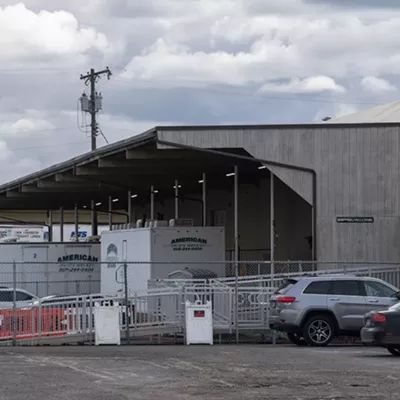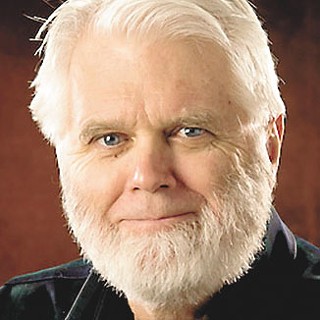We call them "Special District Authorities." We created them to deliver public services and projects that don't fall neatly under any particular governmental jurisdiction. Fire districts, health districts, utilities districts, sewage treatment districts, even school districts have all been part of the governing landscape for years. To this list we can add transportation authorities, public housing authorities and, yes, public facilities districts. Some of these authorities are actually little more than legal fictions, such as port districts. Port districts were established by the state with taxing powers and have great latitude to spend money on economic development. Your city or county doesn't have to be near water to qualify as a "port."
Special district authorities have always posed problems of accountability. They navigate with portfolio, but sans political instruction. Their decision-making boards are often appointed, not elected. And this brings us to our own Public Facilities District and the recent decisions it has been charged with making. First there was the siting of the new convention center. And, related to this decision, there is the question of what to do with Azteca, which must go to make way for the expanded center. I didn't like their decision of choosing the east site for the expansion, and neither did most downtown advocates. But now it appears they will move Azteca, using a suburban design, into the city core, deeding over surface parking for decades to come.
Setting aside for a moment any of several truly mind-boggling decisions made by our City Council over the past number of years (the Lincoln Street Bridge, the River Park Square project, the decision not to pursue annexation, just to name the worst), can anyone think of more mindlessly destructive decisions than these two? I can't even come close.
But it's the ambivalence shown by the PFD towards the City and the downtown leadership requires more discussion and a response.
I've noted how special district authorities typically operate without clear political mandates. Typically, but not in this case. Never before has the will of the public, through its elected representatives, been made so clear. Never before has an authority been given such clear instruction. And the PFD has ignored it.
At the most general level, the PFD had before it the City Comprehensive Plan. This document compliments the council-approved Downtown Plan. Both plans were developed over years, with lots of public input. They represent the community's values. And right there in the Executive Summary of the Downtown Plan we read: "The Downtown Plan identifies several key opportunity sites for new development. The Plan calls for the Convention Center to be expanded on the undeveloped site directly south of the existing facility."
Seems straightforward. The PFD should have considered itself instructed. If this wasn't clear enough -- and this instruction is repeated a number of times throughout the document, directly and by inference. In addition, a long list of related goals and objectives are specified -- goals and objectives contingent on getting the convention center expansion in the proper place. The plan talks about integrating the Opera House with the new convention center and with the downtown (tough to accomplish when you put the convention center over the horizon to the east).
This goal and other objectives were succinctly summarized in a letter addressed to Shaun Cross, chairman of the PFD Board and signed by Tim Lawhead, president of the American Planning Association's Inland Empire chapter. In his letter, sent to protest the PFD's apparent decision to relocate Azteca to the northeast corner of Washington and Main, Lawhead -- after noting that his association seldom takes "a position on a single-development proposal" -- lays out all the ways that the PFD decision violates the Downtown Plan and urges the PFD to "find a solution more in keeping" with it.
The defining spirit behind the City Comprehensive Plan was densification as a tool for slowing down sprawl. Neighborhood integrity and the health of downtown were also values embraced by the Comprehensive Plan. The Downtown Plan complimented these goals and objectives. So what does the PFD do? Just the opposite.
If the Convention Center decision -- now a done deal -- was terrible, the Azteca decision -- still pending -- could be disastrous. If Azteca is to be moved to this location, it should take an urban form: three stories or more -- nothing less. Or, perhaps a well-designed parking structure with commercial activity on the ground floor, complete with storefronts. Azteca would be more than welcome in such a space.
Back in 1996, Dan Solomon, a San Francisco architect and urbanist, came to Spokane to address a symposium on the subject of downtown revitalization. He observed that Spokane's biggest urban design problem was actually its "lack of urban design." Specifically, he referred to the area affected by the PFD decision. At present, more than 10 surface parking lots blight the area. There can be no densification today because the buildings necessary for the densification presently do not exist. And now we learn that more surface parking is on the way and will persist into the future.
Under no circumstances should the PFD compound an already difficult situation. If we can't expect our public entities to follow the plan, do we have any hope of convincing private developers to do so? The Dan Solomons of the world -- not to mention our own urban advocates -- would be appalled to learn that we are considering plopping yet another suburban structure into the downtown area, thus making our already bad urban design problem worse.
Many have weighed in on this issue. Most express a sense of futility, as if the PFD is the ghost in a machine that can't be turned off. But trust me, there are no ghosts. All machines can be turned off.
Publication date: 03/11/04

















